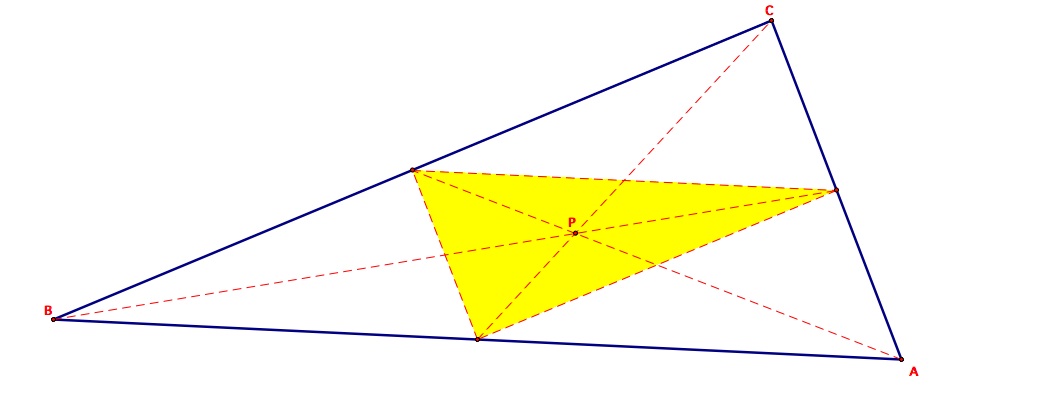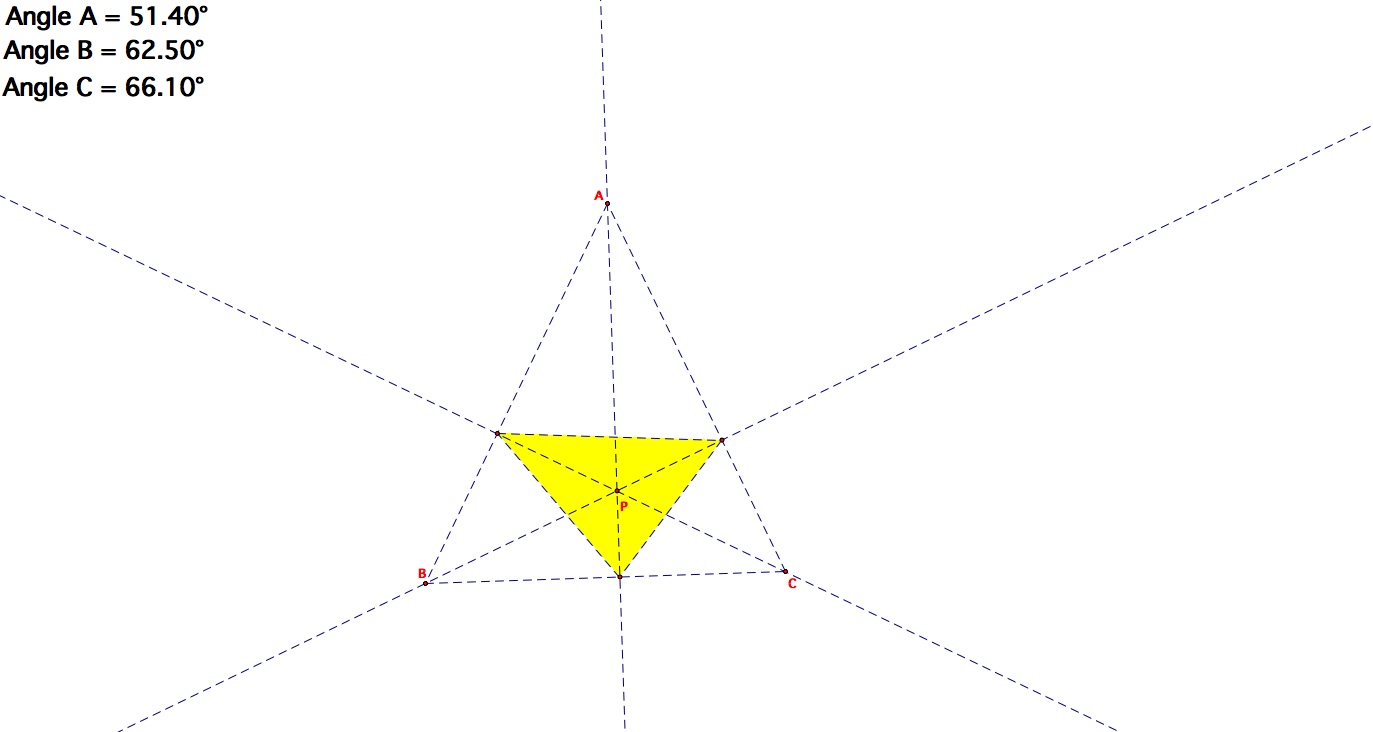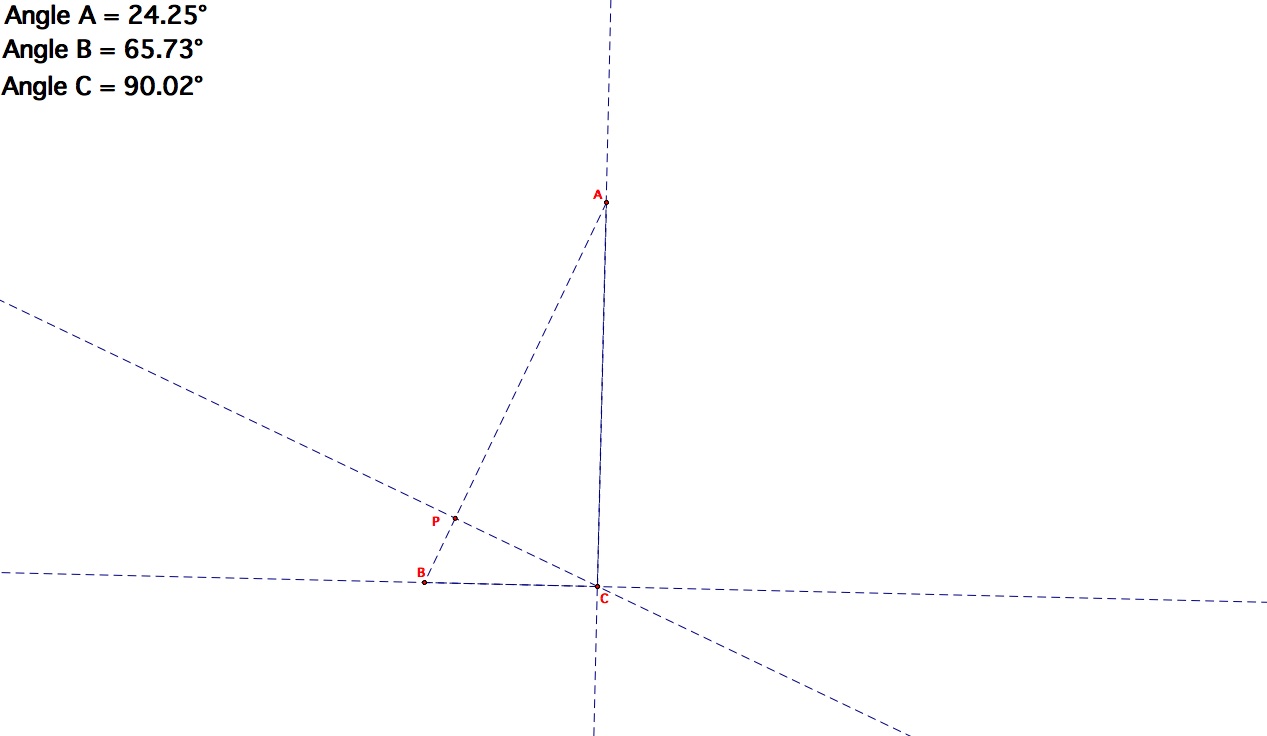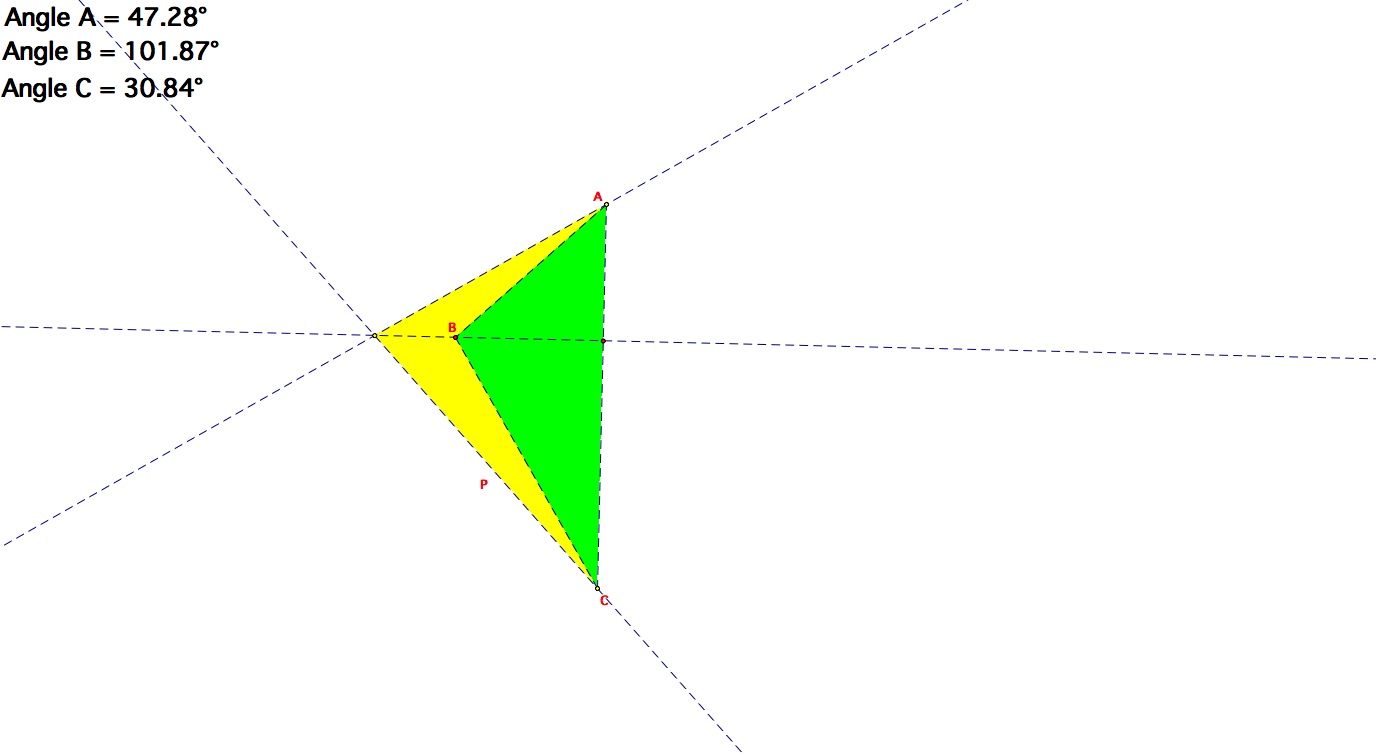

EMAT 6680
Assignment #9
Stephen J. Morgan
Assignment #9 Prompt:
For this assignment I decided to address the following questions:
1.) Use Geometers' Sketch Pad to create a script tool for the general construction of a pedal triangle to triangle ABC where P is any point in the plane ABC.
2.) What if the pedal point P is the centroid of triangle ABC?
3.) What if the pedal point P is the orthocenter of triangle ABC? Even if outside ABC?
4.) What if P is one of the vertices of triangle ABC?
5.) Find all conditions in which the three vertices of the pedal triangle are collinear (that is, it is a degenerate triangle). This line is called the Simson line.
Solution to 1.)
1.) Use Geometers' Sketch Pad to create a script tool for the general construction of a pedal triangle to triangle ABC where P is any point in the plane ABC.
The first part of this investigation requires us to create a script tool for the construction of a pedal triangle. Well, what is a pedal triangle?
In general there are two common definitions:
1.) A pedal triangle, is a triangle formed by projecting a point onto the sides of a triangle.
2.) Given a triangle ABC, imagine a point P that is not on the vertices A, B, or C. Next drop three perpindiculars from P to each of the three sides of the triangle. This
forms three intersections with the original lines of the triangle. Let's label these D, E, and F. Then by joining the points D, E, and F, we form a pedal triangle DEF.
Click here for a GSP script tool of a pedal triangle.
I constructed this triangle with the following premise:
Given a triangle ABC and any point P in the plane, the triangle formed by the perpindiculars to the sides of our triangle ABC is referred to as the Pedal Triangle for the Pedal Point P. Since there was no restrictions placed on the pedal
point P in the construction, the pedal triangle will move any time that the pedal point P is moved.
Solution to 2.)
2.) What if the pedal point P is the centroid of triangle ABC?
Before answering this question, I again would like to take a minute to define the world centroid. In general, a centroid, is the center of a geometric shape. In other words, the interior point of a geometric figure that is equidistant from
every vertex. With this in mind lets answer the question, what if the pedal point P is the centroid of the triangle ABC?
Answer: If P is the centroid of the triangle ABC, then the pedal triangle always occurs in the interior of ABC. This triangle also remains fixed (or the same) since P is the centroid of triangle ABC. Thus, the pedal triangle
never will move outside of the triangle ABC.
Click on the GSP file here, for a further explanation.
Here is a general picture:

Solution to 3.)
3.) What if the pedal point P is the orthocenter of triangle ABC? Even if outside ABC?
Again, let's first approach this problem by giving a defintion of orthocenter. The orthocenter of a triangle, is the point where the three altitudes (with respect to each side) of the triangle intersect.
Answer: For this problem there are really three answers or cases. The first case is where the pedal point P is the orthocenter of an acute triangle. For this case, the pedal point P forms a congruent pedal triangle to the orthic triangle.
Additionally, the triangle will be inside triangle ABC. For the second case, suppose the pedal point P is the orthocenter of a right triangle. Here we have a degenerate case and no triangle appears. Lastly, for the third case, let the pedal
point P be the orthocenter of an obtuse triangle. Here the pedal triangle is partly outside of the triangle ABC and the pedal point P is actually outside triangle ABC. So the pedal point P can be outside ABC, if ABC is an obtuse triangle.
Refer to the pictures below illustrating the three cases:
In the first picture we have an acute triangle. We can see that the orthic and pedal triangles coincide:

In the second picture we can see when we have a right triangle we have a degenerate case:

Finally in the last case, for an obtuse triangle, we see that part of the pedal triangle, the yellow area lies outside of the orthic triangle and that the pedal point p is actually outside of the orthic triangle:

Solution to 4.)
4.) What if P is one of the vertices of triangle ABC?
Answer: If the pedal point P is one of the vertices of the triangle ABC, then the pedal triangle degenerates and becomes a straight line. Click here to look at a GSP file examining this in depth.
Solution 5.)
5.) Find all conditions in which the three vertices of the pedal triangle are collinear (that is, it is a degenerate triangle). This line is called the Simson line.
Answer: We already know one case where this is true for exercise #4. The three vertices of the pedal triangle are collinear when the pedal point P is one of the vertices of the original triangle ABC. We also know from #3 if the
pedal point P is the orthocenter of a right triangle that this is true. These appear to be the only cases where this is true.